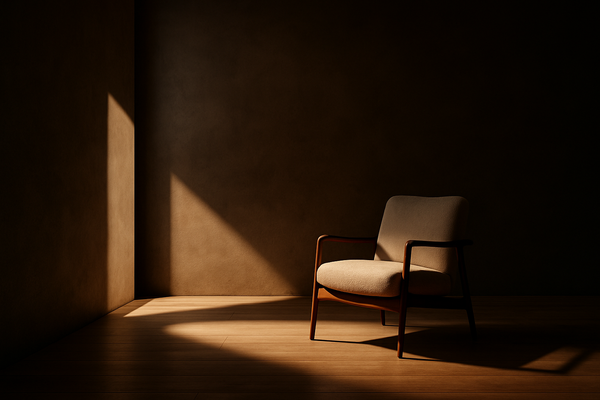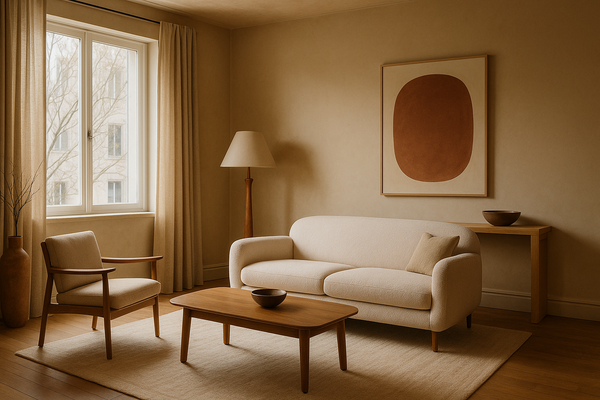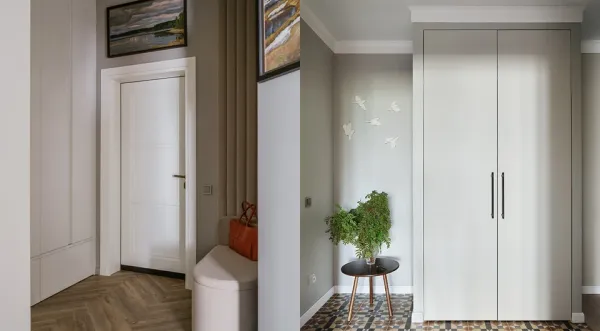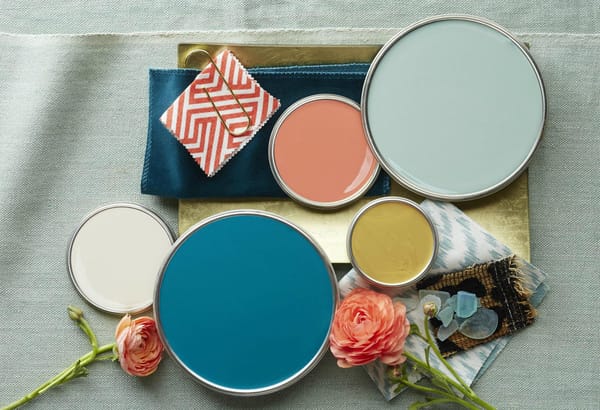Lesson 9: Layout Principles - How to Place Furniture for Low, Function, and Feeling
Want a space that feels good and works beautifully? This lesson breaks down the art of placing furniture for better flow, function, and emotional impact, from sofas and dining tables to small space hacks.
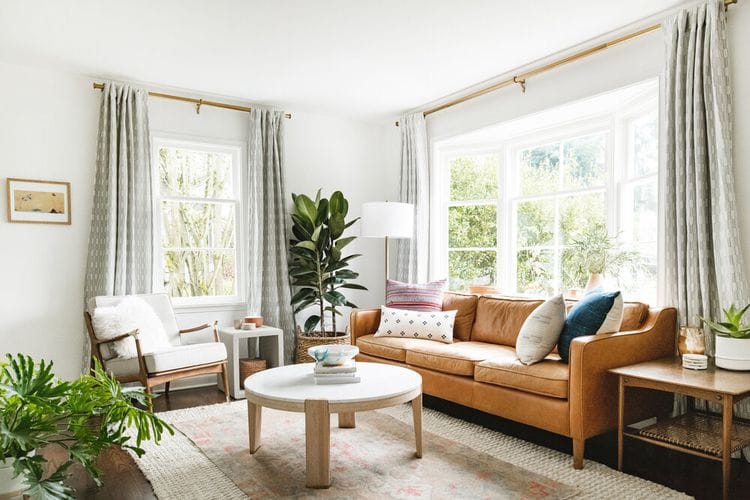
A well-designed room doesn't just look good, it feels right. That invisible feeling of balance, comfort, and clarity often comes down to one quiet yet powerful detail: layout.
Whether you live in a studio apartment or a spacious home, the way your furniture is placed defines how your space flows. It can create ease or chaos, warmth or distance, peace or pressure.
In this lesson, we'll explore layout as a form of emotional design, and show you exactly how to place your furniture for both function and feeling.
1. Start with the Anchor
Every room needs an anchor, the piece that grounds the entire space. It's usually the largest, most functional item in the room:
- Living Room: your sofa
- Bedroom: your bed
- Dining room: your table
Start with this item first. Don't push it into a corner. Give it space to breathe. Center it around your focal point (like a fireplace, large window, or TV), and let everything else orbit around it.
2. Respect the Flow
Think about how people move through the room. Every layout should allow for flow, clear pathways to walk around without bumping into things.
Key spacing rules:
- Leave 75-90 cm of walkway space in major routes
- Allow 30-45 cm between furniture and walls
- Keep 40-50 cm between a coffee table and sofa for comfort
Visualize walking from one end to another. Does it feel natural, or like a maze?
3. Create Zones in Open Spaces
If you have an open-plan living area, use your layout to define zones:
- Seating area
- Dining area
- Workspace or reading nook
You don't need walls to separate them; rugs, lighting, and furniture orientation can do it beautifully. Place your furniture to the suggested boundaries while keeping the overall flow open.
4. Balance the Weight
Interior designers often talk about visual weight, how "heavy" or "light" something feels in a room.
If all your big pieces are on one side, the space feels lopside. Mix tall and short, solid and airy. Pair a chunky sofa with a light-legged chair. Use mirrors or open shelving to add lightness.
5. Layer Seating for Connection
Conversations happen best when furniture faces each other. Arrange sofas and chairs in a U-shape or L-shape, not all facing the TV.
This fosters interaction and intimacy; even if you live alone, your space will feel more alive.
If you only have one couch, add a side chair or pouf across from it.
6. Use Negative Space Wisely
Negative space = empty space. Don't fear it.
A room filled edge to edge feels cramped and cluttered. Let your layout breathe:
- Pull furniture away from the walls
- Leave room around focal pieces
- Don't overcrowd with decor
Whitespace is a powerful design tool. It invites calm, clarity, and focus.
7. Think in Sightlines
What do you see when you enter the room? When you sit on the sofa? When you lie in bed?
These views, called sightlines, shape how your room feels.
- Avoid blocking sightlines with tall furniture
- Frame views intentionally (artwork, plants, mirrors)
- Align furniture to open lines of vision
A clear sightline makes a room feel larger and more harmonious.
8. Mind the Scale
Scale = the size relationship between objects. You dont want a massive sectional in a tiny room, or tiny nightstands next to a king bed.
- Mix sizes, but keep proportions balanced
- Use oversized art in large rooms, and smaller pieces in tight spaces
- Low-profile furniture makes ceilings feel taller
Get down at eye level. Does anything feel too tall, bulky, or out of sync?
9. Function First, Always
Don't arrange your space just for photos. Ask yourself:
- Where will I sit, work, eat, and rest?
- What furniture do I actually use daily?
- Is everything easy to access and put away?
Function drives design. Your layout should serve your lifestyle, not fight it.
10. Test and Adjust
Even professional designers rearrange things a dozen times before it feels right. Use painter's tape or floor planner apps to map things out. Then live in the layout for a few days.
If something feels off, tweak it.
Great design doesn't come from rules alone; it comes from listening to your space.
Final Thoughts
The way your furniture is placed is more than visual; it's emotional.
It shapes how you feel, move, and live in your home.
By applying these layout principles with intention, you can create a space that flows effortlessly and feels like you.
Start with your anchor. Respect the flow. Let the room breathe.
Design from the inside out.

